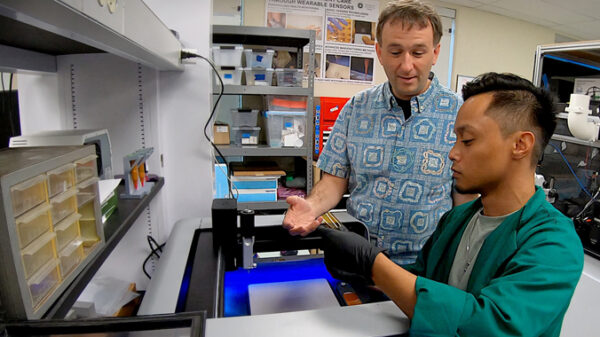Researchers have achieved a significant milestone in neuroscience by creating one of the largest and most detailed biophysically realistic simulations of a mouse cortex. Utilizing the power of the Fugaku supercomputer, this simulation allows scientists to explore brain functions and disorders in ways previously unattainable.
This virtual model encompasses almost 10 million neurons, 26 billion synapses, and 86 interconnected brain regions. It enables the study of complex conditions, such as Alzheimer’s disease and epilepsy, by simulating how these diseases impact neural networks and cognitive processes.
Collaboration and Technology Behind the Project
The project is a collaborative effort led by the Allen Institute and Tadashi Yamazaki, Ph.D., from Japan’s University of Electro-Communications, alongside three additional Japanese organizations. Their findings will be presented at the upcoming SC25 conference in mid-November.
Fugaku, developed by RIKEN and Fujitsu, is one of the world’s fastest supercomputers, capable of performing over 400 quadrillion calculations per second. To illustrate its remarkable speed, counting to this number one by one would take more than 12.7 billion years, roughly equivalent to the age of the universe.
Yamazaki noted, “Fugaku is used for research in a wide range of computational science fields, such as astronomy, meteorology, and drug discovery, contributing to the resolution of many societal problems. On this occasion, we utilized Fugaku for a neural circuit simulation.”
The simulation process relied on the Allen Institute’s comprehensive datasets, including the Allen Cell Types Database and the Allen Connectivity Atlas. With the help of the Brain Modeling ToolKit, researchers translated this data into a functioning digital model. A neuron simulator called Neulite was employed to simulate neuron activity, mimicking the natural behavior of brain cells.
Implications for Neuroscience Research
Scientists can now ask intricate questions about brain diseases, such as identifying how brain waves influence focus or how seizures propagate through neural circuits. Previously, these investigations required real brain tissue and were limited to one experiment at a time. Today, researchers can explore these scenarios in a virtual environment, allowing for safer testing of new treatments and therapies.
“This shows the door is open. We can run these kinds of brain simulations effectively with enough computing power,” said Anton Arkhipov, Ph.D., an investigator at the Allen Institute involved in the project.
Arkhipov emphasized the achievement as a technical milestone, stating, “It gives us confidence that much larger models are not only possible, but achievable with precision and scale.” This international collaboration merges human neuroscience knowledge with the exceptional computing capabilities of Fugaku, paving the way for future advancements.
The researchers’ long-term vision includes developing whole-brain models that may eventually extend to human brains, harnessing the extensive biological details that are continuously being discovered. Arkhipov remarked, “We’re now moving from modeling single brain areas to simulating the entire brain of the mouse.”
With this advanced computational power, the goal of creating a fully biophysically accurate brain model is becoming increasingly realistic. The research represents a new frontier in neuroscience, where understanding the brain may eventually lead to the ability to model its complex structures and functions digitally.
This groundbreaking work showcases the potential of technology in unraveling the mysteries of the brain, offering hope for new insights into neurological disorders and treatment strategies.






































































